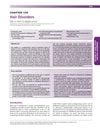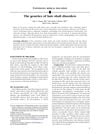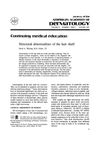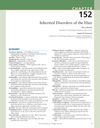Polarized Microscopy in Genetic Hair Disorders: Case Series
January 2025

TLDR Polarized microscopy helps identify hair irregularities in genetic disorders.
This study examined the microscopic features of hair in 10 patients with rare genetic disorders using polarized light microscopy. The patients included 6 with Netherton syndrome, 2 with hypotrichosis congenita hereditaria Marie Unna, and 2 with ectodermal dysplasia (Smurf syndrome). Polarized microscopy, a noninvasive diagnostic method, was used to assess hair thickness, microfibrillar composition, and structural anomalies by observing changes in light refraction and coloration. This technique is valuable for identifying hair shaft irregularities and provided significant insights into the alopecia observed in these patients, which is a primary clinical sign of their genetic conditions.




